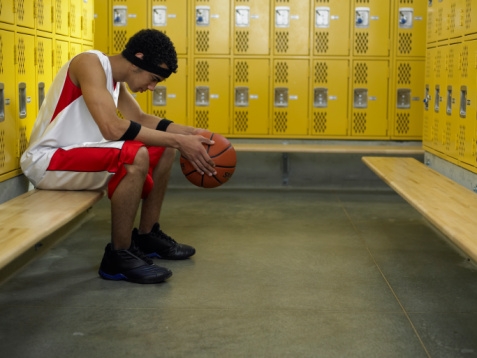 A bill pending in the Congress would ban corporal punishment in school sports, ending the spanking, paddling and physical punishment many states permit at the hands of teachers and coaches.
A bill pending in the Congress would ban corporal punishment in school sports, ending the spanking, paddling and physical punishment many states permit at the hands of teachers and coaches.
U.S. Representative Carolyn McCarthy (D-NY) has just introduced H.R. 5628, a bill to ban school corporal punishment. Twenty states still allow corporal punishment in public schools and even more states permit the practice in private schools. The bill is supported by the National PTA, the National Association of Secondary School Principals. Eighty education and child advocate groups have signed a letter supporting the legislation.
I included a story of youth sports-related corporal punishment (in the form of forced exercise as punishment) in my book Home Team Advantage. Courtney* was an 11-year-old girl in Texas playing middle school basketball team when her distraught parents e-mailed me seeking my help. Courtney's coach had punished her for arriving ten minutes late to an early morning practice (her mom had gotten caught in traffic), forcing her to run five sets of bleacher stairs and do five defensive hustle drills.
After running the stairs for twenty minutes, Courtney became ill and ran to the bathroom to throw up. When she returned to the basketball court - humiliated, scared, and too sick to continue - her coach ordered her to finish her stair-running. Collapsing after vomiting again, she was benched for the next game. The coach imposed the same form of punishment on other players who were late to practice.
Sadly, Courtney was only one of nearly 50,000 students in Texas who were subjected to corporal punishment during the 2006-2007 school year, many at the hands of coaches. My e-mail inbox is filed with stories similar or worse to the one told by Courtney's mom.
Indeed, of the thousands of emails, phone calls, and media stories that MomsTeam has received over the past ten years, the ones I find most distressing are those, like the one I received from Courtney's mom, that tell of youth athletes suffering abuse at the hands of coaches, other adults and their teammates. Parents are frustrated because they are told that physical, emotional, and physiological abuse is simply the price their children have to pay to be able to play competitive sports, and that if they complain, like Courtney's mother, they will be dismissed as representing a small minority, when in fact, they represent a silent majority.
In my view, a law banning corporal punishment in schools is long overdue.
How you can help
If you agree with me, I urge you to call, email or write your U.S. Representative and ask him or her to support H.R. 5628 and join with Representative McCarthy as a co-sponsor.
Contact information for your Representative can be found by clicking here. On the right side of the page, enter your zip code in the box labeled "Find Your Lawmakers."
What to say when you call
I am calling to ask Representative _________ to support H.R. 5628 , a bill to ban school corporal punishment.
Here are some of the reasons I support the bill:
(1) Twenty states still allow corporal punishment in schools and over 223,000 school children are hit each year;
(2) Corporal punishment can lead to student injuries and law suits against school boards; and
(3) Over fifty national organizations including the National Education Association, the American Medical Association and the American Bar Association oppose school corporal punishment.
Ask him/her to support the bill.
Ask him/her to become a co-sponsor.
Thank him/her for their support.
For more information about effects of school corporal punishment and alternatives to its use click here.
For more information about abuse in sports, click here.
* Not her real name